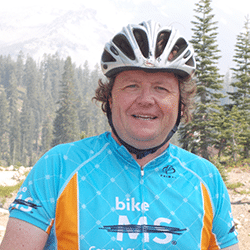The Irish Famine (or ‘Great Potato Famine’ if you live outside the Emerald Isle) killed one million people and forced another million to leave the country between 1845 and 1852. It was caused by a blight on the country’s main food stock- the Irish ‘Lumper’ potato. Now, researchers have identified the genome of the blight behind the famine.
Now it’s gone
Phytophthora infestans is related to a fungus, and infected the Irish potato crop in 1845. An international research team led by The Sainsbury Laboratory in Norwich, England, gathered plant samples from various museums, and sequenced the genome of the blight-causing organism. They found that P. infestans, while related to other blights that continue to infest plants worldwide, no longer exists and probably became extinct some years after the Irish famine.
Enter the potato
The potato was initially introduced to Ireland as a supplement to a diet which was rich in milk, grains and butter. As with the rest of Europe, Ireland became more industrialized as the 1800s marched on. With this came a growing need for cheap labor, and a cheap way to feed those laborers. Enter the potato.
Sowing the seeds…of disaster
Cheap to grow, and a good source of nutrition overall, the potato became the central crop of Ireland. But seeds of disaster were also being sown. Not only were planters using just one type of potato, the ‘Lumper’ potatoes were clones- genetically identical versions of each other. That makes for faster plant growth, but also makes for a crop that is more susceptible to disease.
Enjoying this article? Get hard-won lab wisdom like this delivered to your inbox 3x a week.

Join over 65,000 fellow researchers saving time, reducing stress, and seeing their experiments succeed. Unsubscribe anytime.
Next issue goes out tomorrow; don’t miss it.
Not diverse enough
When the P. infestans blight entered Ireland, it devastated the potato crop, turning healthy potatoes into rotted slime. If more diverse types of potatoes had been planted, only the susceptible potatoes would have succumbed to the blight, leaving at least some food to grow. While the blight definitely affected potatoes in other parts of Europe (most of Europe, actually), those countries had diverse enough food crops to weather the potato devastation.
Still felt today
The effect of the famine continues to be felt today. Ireland’s population is still lower than it was before the 1845 famine. The political ramifications of the famine were also significant- Ireland believed that Great Britain could have done more to help the starving Irish, and these wounds helped spur the Irish war of independence in 1919.
Discovering an extinct strain
Before this study, researchers assumed that only one strain of the blight, called US-1, was responsible for potato infection. It was thought to originate in the United States and make its way to Europe. But working with museum-curated leaves about a century and a half old, the researchers were able to provide an Illumina sequence of the P. infestans mitochondrial genome that showed another strain had split from US-1 in the early 1800s. And it was that new strain, called HERB-1 that infested Irish potatoes- and which is now extinct.
Marked for disaster
Oddly (and perhaps sadly), the researchers found that the P. infestans that caused the Irish famine was less virulent than current strains which cause billions in crop damage each year. The Irish strain lacked a gene that helps current strains fight off natural plant resistance. The Irish potato, it seemed, was marked for disaster.
Yoshida, K., et al. (2013). The rise and fall of the Phytophthora infestans lineage that triggered the Irish potato famine.
You made it to the end—nice work! If you’re the kind of scientist who likes figuring things out without wasting half a day on trial and error, you’ll love our newsletter. Get 3 quick reads a week, packed with hard-won lab wisdom. Join FREE here.








